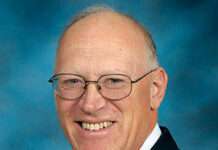‘Blue Zones’ give clues to how people can live longer, healthier
MANHATTAN, Kan. – The secret to living healthier, happier and longer lives has been out for many years now.
‘Secrets,’ actually. Plural. And there are nine of them.
In 2005, explorer Dan Buettner reported in National Geographic five areas of the world where people seemed to be living longer and healthier. In each of those places, he discovered nine common traits that seemed to explain people’s longevity, and he termed the locations ‘Blue Zones.’
“Blue Zones are regions around the world where the healthiest, oldest people live,” said K-State Research and Extension adult development and aging specialist Erin Yelland. “In addition to diet, exercise and rest, other lifestyle and social factors may contribute to their longevity.”
Buettner’s travels led him to Blue Zones in Italy, Costa Rica, Greece, Japan and California.
“Really it all stems from asking how these people are living longer and healthier lives, and what are the common denominators they all experienced to help them do that?” said Yelland, who outlined the nine traits on the June 1 broadcast of the weekly K-State radio program, Sound Living.
The ‘Power Nine’ traits of Blue Zones include:
Move naturally. “We all know that exercise is incredibly important to our overall health and wellness,” Yelland said. “But within these Blue Zones, people aren’t going to the gym, engaging in CrossFit or running marathons. Instead they move naturally throughout their day; they may walk to the grocery store, or garden every day.
“Whatever they’re doing, they are moving naturally. You won’t see escalators and elevators in some of these areas because people are naturally going to take the stairs. People continue to garden and work their land well into their 90s.”
Know your purpose. People in Blue Zones have a purpose for why they wake up in the morning. “They have that ‘jolt’ in the morning, the reason why they’re living their life and why they want to live a healthier life,” Yelland said.
Downshift. This relates to stress relief. “In America, we talk a lot about mindfulness and stress relief,” Yelland said. “But in Blue Zones, this is a natural practice for people.” For example, in Okinawa, Japan, people take a minute every day to remember their ancestors. In Loma Linda, California, people take time to pray every day. In Greece, it’s an afternoon nap. In Italy, a Happy Hour.
“All of these people across the Blue Zones have some sort of practice that help them naturally relieve stress,” Yelland said. “It’s naturally built into their day.”
The 80% Rule. “This means that you should stop eating when you feel you are 80% full,” Yelland said. “It takes a while for our brain and stomach to communicate.” Healthier people over-eat less, avoiding calories that the body does not necessarily need.
Plant Slant. Yelland said people in the Blue Zones eat more plant-based foods, such as beans and nuts and green leafy vegetables. “It shows a lot about the power of food, what we’re putting into our body and how we choose to nourish ourselves,” she said.
Their diets do not exclude meat products, but meat is included in moderation. “People are eating things that are in season and naturally grown in their area,” Yelland said. “There is a lot of variation in their diet.”
Wine at 5. Yelland encourages a regular glass of red wine. “If you have a health relationship with alcohol, one glass of red wine a day can really have positive health benefits,” she said.
“What we’ve seen in the Blue Zones is that having a glass of red wine in the evening can be particularly beneficial, because most of the time they are not doing it alone. They are with other people — friends, family, on the town at a restaurant – and they are engaging in social activity.”
Family First. Being around family, including non-blood family, “is incredibly important because they provide a solid foundation on which you can grow,” Yelland said. “They provide stability, support and all sorts of good things that we want from positive relationships in our lives.”
Belonging. In all of the Blue Zones, people identify with some sort of faith-based community. “Denomination doesn’t matter,” Yelland said. “What seems to be more important is that we have this sense of community and belonging and support and social network that comes along with faith-based communities.”
Right Tribe. Many of the people living in Blue Zones are like-minded when it comes to healthier lifestyles, Yelland said. “When people around you are also making healthy choices, and your environment supports those choices, it’s a lot easier for you to make healthy choices, and you have the support around you to keep doing that throughout your lifetime,” she said.
The community as a whole, she added, supports positive living. “It’s an attitude of thinking that we are all in this together. We’re all supporting one another and overall our environment is supporting healthy living.”
Yelland noted that there are areas across the United States and world that are working at creating their own Blue Zones. Major cities are working to make their communities more conducive to healthy living. But, she notes, it can start even on a small level.
“It can start with you and within your home,” she said. “If you take these Power Nine ideas and think of how you can practice more of these aspects of healthy living in your daily life, you can create a Blue Zone within your home or within yourself. Eventually the power of the social belonging and our social connections can extend that to our community and we can kind of see a Blue Zone happen from the inside out.”
K-State Research and Extension offers a regular program called Keys to Embracing Aging that is available throughout Kansas. For more information on that program, or on healthy aging, contact your local county extension agent.
FOR PRINT PUBLICATIONS: Links used in this story
Keys to Embracing Aging, www.aging.k-state.edu/programs/embracing-aging/embracing-aging.html
K-State Research and Extension local offices directory, www.ksre.k-state.edu/about/statewide-locations.html
K State Research and Extension is a short name for the Kansas State University Agricultural Experiment Station and Cooperative Extension Service, a program designed to generate and distribute useful knowledge for the well being of Kansans. Supported by county, state, federal and private funds, the program has county extension offices, experiment fields, area extension offices and regional research centers statewide. Its headquarters is on the K State campus in Manhattan. For more information, visit www.ksre.ksu.edu. K-State Research and Extension is an equal opportunity provider and employer.
Written by:
Pat Melgares
785-532-1160
[email protected]
For more information:
Erin Yelland
785-532-5510
[email protected]





